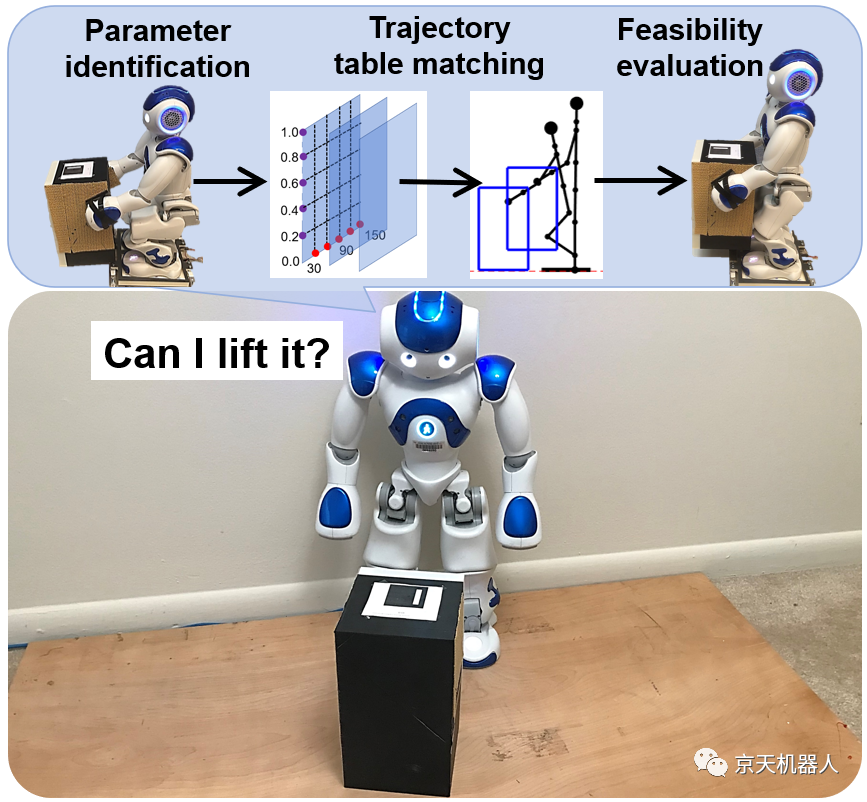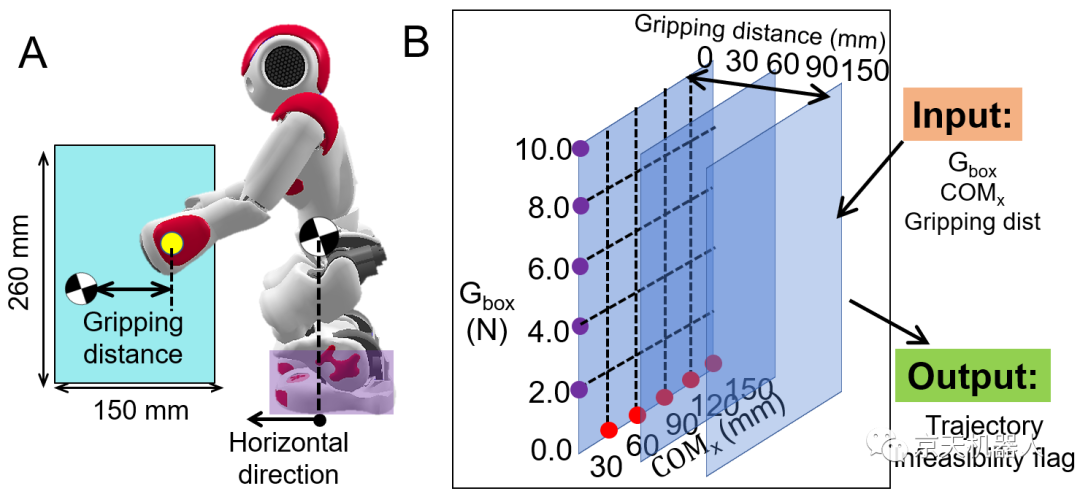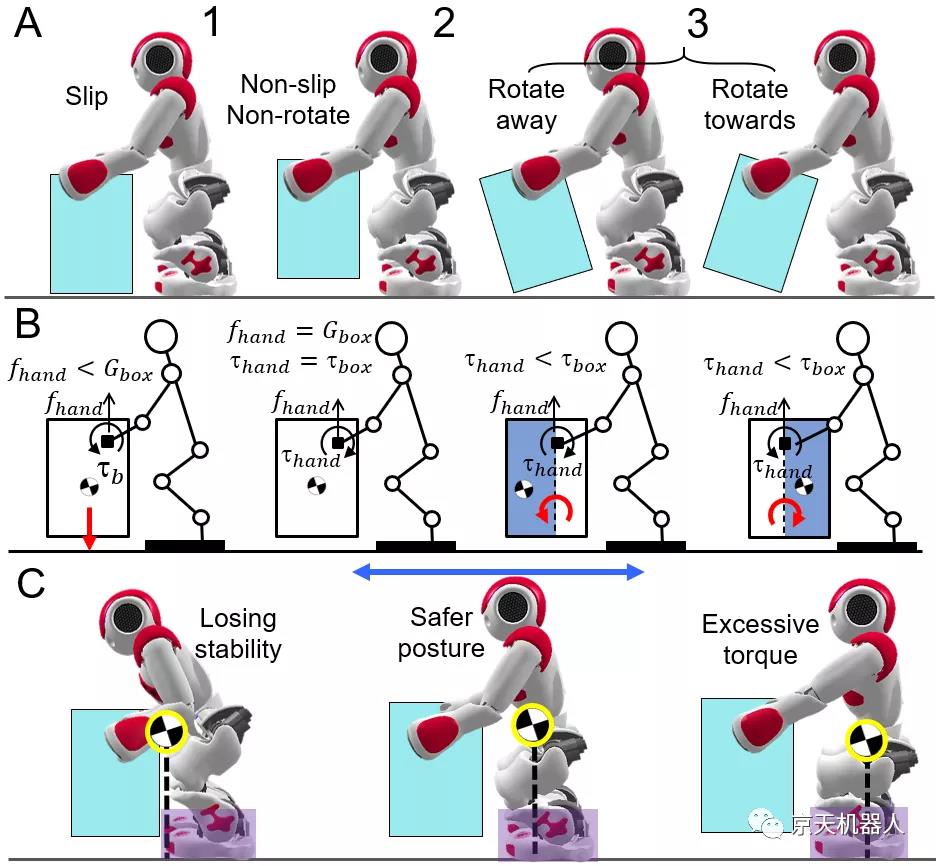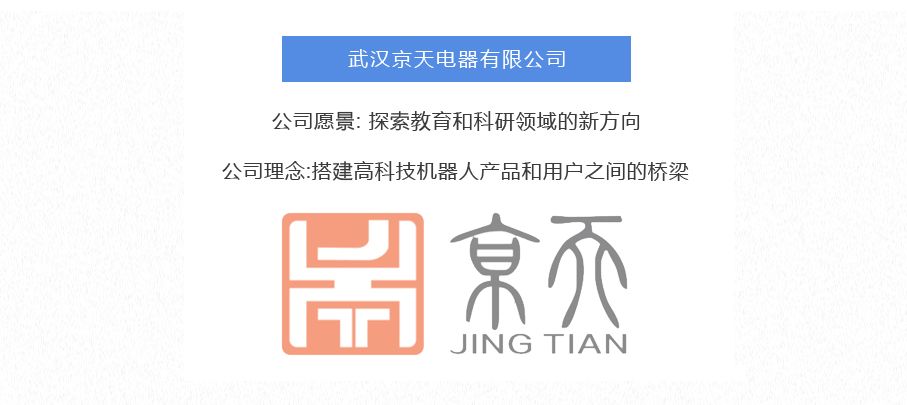
The humanoid robot explains the feasibility of using the three-step method to lift heavy boxes with unknown physical properties
Humanoid robots (humanoid robots have a configuration similar to the human body) may quickly assist individuals in completing various tasks. Most of the tasks these robots are designed to accomplish include selecting objects of various shapes, weights, and sizes.
Although many developed humanoid robots can pick up small and lightweight objects, it is often difficult to lift heavy objects. In fact, if the object is too large or too heavy, the robot may find itself falling or breaking the object.
With this in mind, researchers at Johns Hopkins College and the National University of Singapore (NUS) have only recently developed a method that allows robots to find out whether they can carry heavy objects of unknown volume. This method was introduced in a pre-published paper on arXiv, and it allows the robot to move objects more efficiently, thereby reducing the chance of the robot to solve problems that cannot be solved or handled.

"In terms of improving the feasibility of areas where human body parameters are unknown, we paid special attention to the way humanoid robots move," said Han Yuanfeng, one of the many researchers who conducted this inspection. To complete the handling task, the robot usually must first determine the physical parameters in the field, and then generate a complete motion trajectory that meets the safety of the site."
The method for the robot to generate the motion trajectory that allows it to carry the object will be computationally demanding. In fact, humanoid robots sometimes have too many degrees of freedom, and the movements that their body shape must perform in order to carry objects should satisfy many completely different constraints. Therefore, if an object is too heavy or its center of mass is too far from the robot, the robot will almost certainly not be able to complete the movement.
After defining our motivations, please consider whether we, as people, can lift heavy objects similar to dumbbells. "We first experiment with dumbbells to make sure that we have a certain sense of the object. Then, mainly based on our earlier expertise, we will know if it is too heavy to carry. Similarly, our technique starts with establishing a trajectory to work This workbench saves completely different legal lifting motions for the robot through simulation, which is equivalent to physical parameters in various fields. Then, the robot will consider using this desk because it has early expertise."
The method Han developed in collaboration with his colleague Ruiui Li and his supervisor Gregory S. Chirikjian (NUS professor and head of the Department of Mechanical Engineering) allows the robot to interact with it by simply acquiring the inertial parameters of the magnetic field. Subsequently, the robot appears to be on the trajectory table generated by the strategy again, and checks whether it has a lifting motion so that it can carry the field with these estimated parameters.
If there is such a movement or trajectory, it should be considered that the object may have to be lifted, and the robot can perform its duties immediately. If it does not exist, the robot will consider responsibilities beyond its capabilities.
“Fundamentally speaking, the trajectory platform constructed by our technology offline will save the legal whole-body lifting trajectory according to the inertial parameter changes of the magnetic field,” Han said. "Subsequently, we developed a main algorithm based on physical interaction that can help the robot work safely with the magnetic field and estimate the inertial parameters of the magnetic field."

The new method allows the robot to quickly determine whether it can complete the lifting-related process. This saves time and computing power because it avoids that the robot must perform full-body movements earlier before each lift attempt (or even a failed lift attempt).
Han and his colleagues used NAO robots (a well-known humanoid robot developed by SoftBank Robotics) to evaluate their strategies in a series of actions. In these experiments, NAO quickly and successfully identified objects that could not be achieved or were very troublesome using new methods. In the near future, different humanoid robots may use the same method to make them more reliable and environmentally friendly when carrying heavy loads or heavy objects.
This technology can significantly improve the work efficiency of pick-and-place tasks, especially for repeatable tasks. In future work, we plan to use this strategy for completely different goals or tasks.
References:Han Y, Li R, Chirikjian G S. Can I lift it? Humanoid robot reasoning about the feasibility of lifting a heavy box with unknown physical properties[J]. arXiv preprint arXiv:2008.03801, 2020.
As the authorized agent and the largest sales platform of many internationally renowned intelligent robot companies in China, such as Japan's Softbank Robotics Company, Canada Clearpath Company, Denmark Universal Robots Company, South Korea ROBOTIS Company, etc., Wuhan Jingtian Electric has become the most capable of technical integration and after-sales service. The strength of agents.


Donghu Robot Laboratory, 2nd Floor, Baogu Innovation and Entrepreneurship Center,Wuhan City,Hubei Province,China
Tel:027-87522899,027-87522877
Robot System Integration
Artificial Intelligence Robots
Mobile Robot
Collaborative Robotic Arm
ROS modular robot
Servo and sensor accessories
Scientific Research
Professional Co Construction
Training Center
Academic Conference
Experimental instruction
Jingtian Cup Event